Numerical Simulations on Heat Transfer Enhancement of Nanofluids in Microchannel Using Vortex Generator †
Abstract
1. Introduction
2. Materials and Method
3. Result and Discussion
3.1. Code Validation and Mesh Independence Studies
3.2. Result
4. Conclusions
- (1)
- In the Lock-in range, the heat transfer efficiency can be improved. For example, when and , the heat transfer efficiency is increased by about 5.08% compared to the fixed cylinder case.
- (2)
- Increasing the concentration reduces the Lock-in range.
- (3)
- Increasing the concentration results in heat transfer enhancement. When , increases from 0 to 5%, and the heat transfer efficiency increases by 117.3%.
Author Contributions
Funding
Institutional Review Board Statement
Informed Consent Statement
Data Availability Statement
Acknowledgments
Conflicts of Interest
References
- Ju, W.J.; Fu, L.M.; Yang, R.J.; Lee, C.L. Distillation and detection of SO2 using a microfluidic chip. Lab. Chip. 2012, 12, 622–626. [Google Scholar] [CrossRef] [PubMed]
- Tuckerman, D.B.; Pease, R.F.W. High-performance heat sinking for VLSI. Electron Device Lett. 1981, 2, 126–129. [Google Scholar] [CrossRef]
- Yeom, T.; Simon, T.W.; Yu, Y.; North, M.T.; Cui, T. Convective heat transfer enhancement on a channel wall with a high frequency, oscillating agitator. In Proceedings of the ASME International Mechanical Engineering Congress and Exposition, Denver, CO, USA, 11–17 November 2011; pp. 875–884. [Google Scholar]
- Celik, B.; Raisee, M.; Beskok, A. Heat transfer enhancement in a slot channel via a transversely oscillating adiabatic circular cylinder. Int. J. Heat Mass Transf. 2010, 53, 626–634. [Google Scholar] [CrossRef]
- Kumar, V.; Garg, H.; Sharma, G.; Bhardwaj, R. Harnessing flow-induced vibration of a D-section cylinder for convective heat transfer augmentation in laminar channel flow. Phys. Fluids 2020, 32, 19. [Google Scholar] [CrossRef]
- Lienhard, J.H. Synopsis of Lift, Drag, and Vortex Frequency Data for Rigid Circular Cylinders; Technical Extension Service; Washington State University: Pullman, WA, USA, 1966; Volume 300. [Google Scholar]
- Zhao, M.; Cheng, L.; An, H.; Lu, L. Three-dimensional numerical simulation of vortex-induced vibration of an elastically mounted rigid circular cylinder in steady current. J. Fluids Struct. 2014, 50, 292–311. [Google Scholar] [CrossRef]
- Buongiorno, J. Convective transport in nanofluids. J. Heat Transf.-Trans. ASME 2006, 128, 240–250. [Google Scholar] [CrossRef]
- Liao, C.C. Heat transfer transitions of natural convection flows in a differentially heated square enclosure filled with nanofluids. Int. J. Heat Mass Transf. 2017, 115, 625–634. [Google Scholar] [CrossRef]
- Liao, C.-C.; Chang, Y.-W.; Lin, C.-A.; McDonough, J. Simulating flows with moving rigid boundary using immersed-boundary method. Comput. Fluids 2010, 39, 152–167. [Google Scholar] [CrossRef]
- Corcione, M. Empirical correlating equations for predicting the effective thermal conductivity and dynamic viscosity of nanofluids. Energy Conv. Manag. 2011, 52, 789–793. [Google Scholar] [CrossRef]
- Meis, M.; Varas, F.; Velazquez, A.; Vega, J.M. Heat transfer enhancement in micro-channels caused by vortex promoters. Int. J. Heat Mass Transf. 2010, 53, 29–40. [Google Scholar] [CrossRef]
- Soti, A.K.; De, A. Vortex-induced vibrations of a confined circular cylinder for efficient flow power extraction. Phys. Fluids 2020, 32, 16. [Google Scholar] [CrossRef]
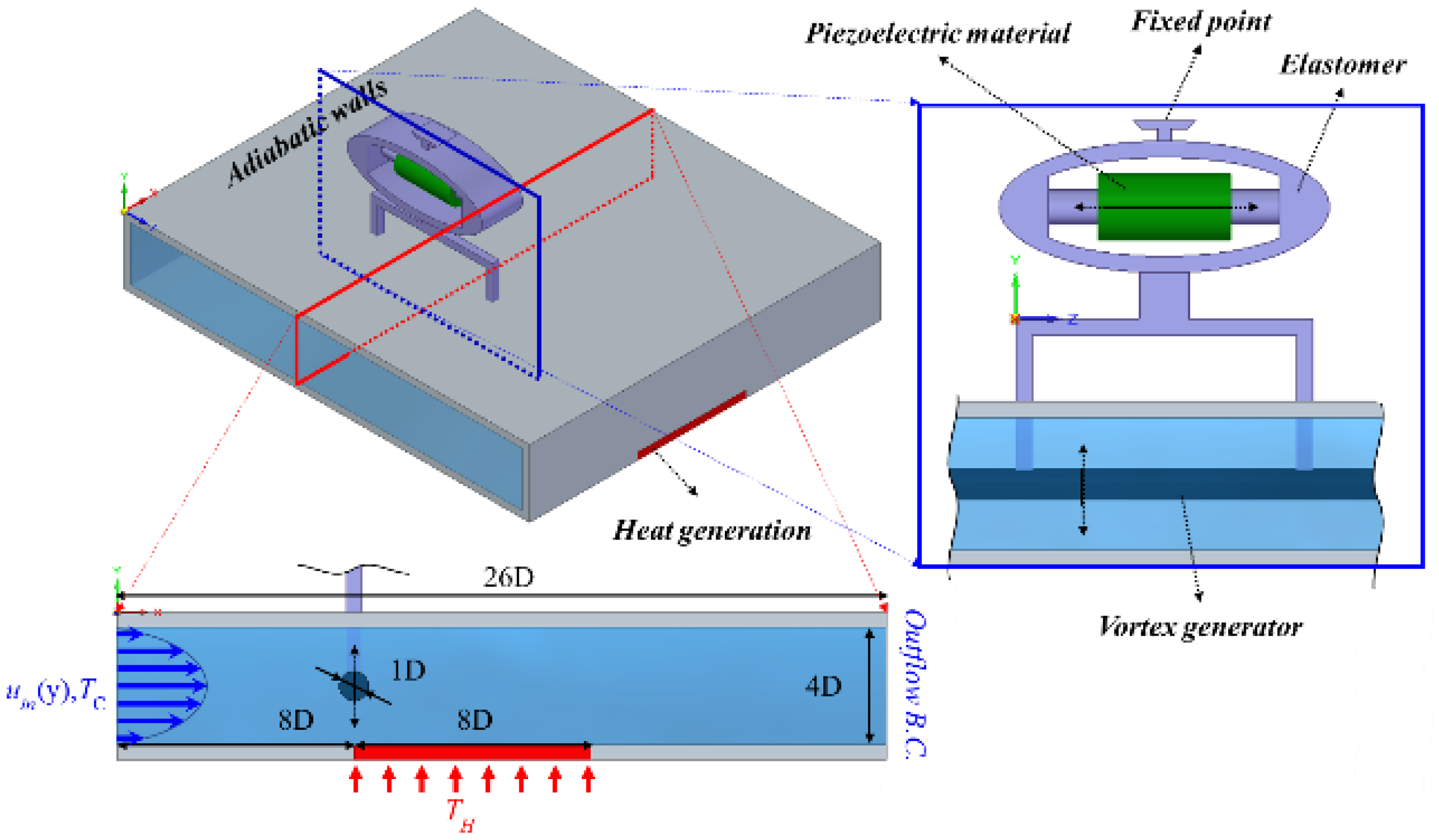
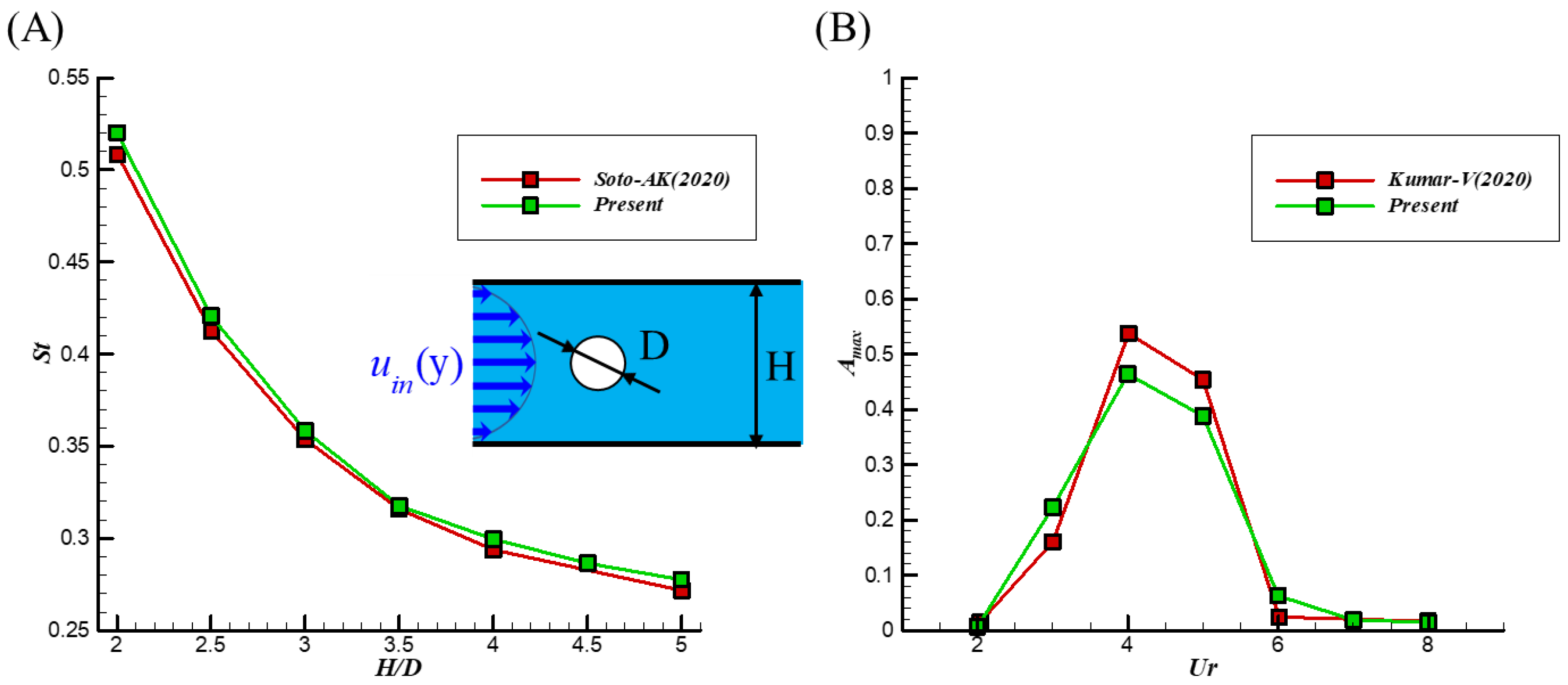
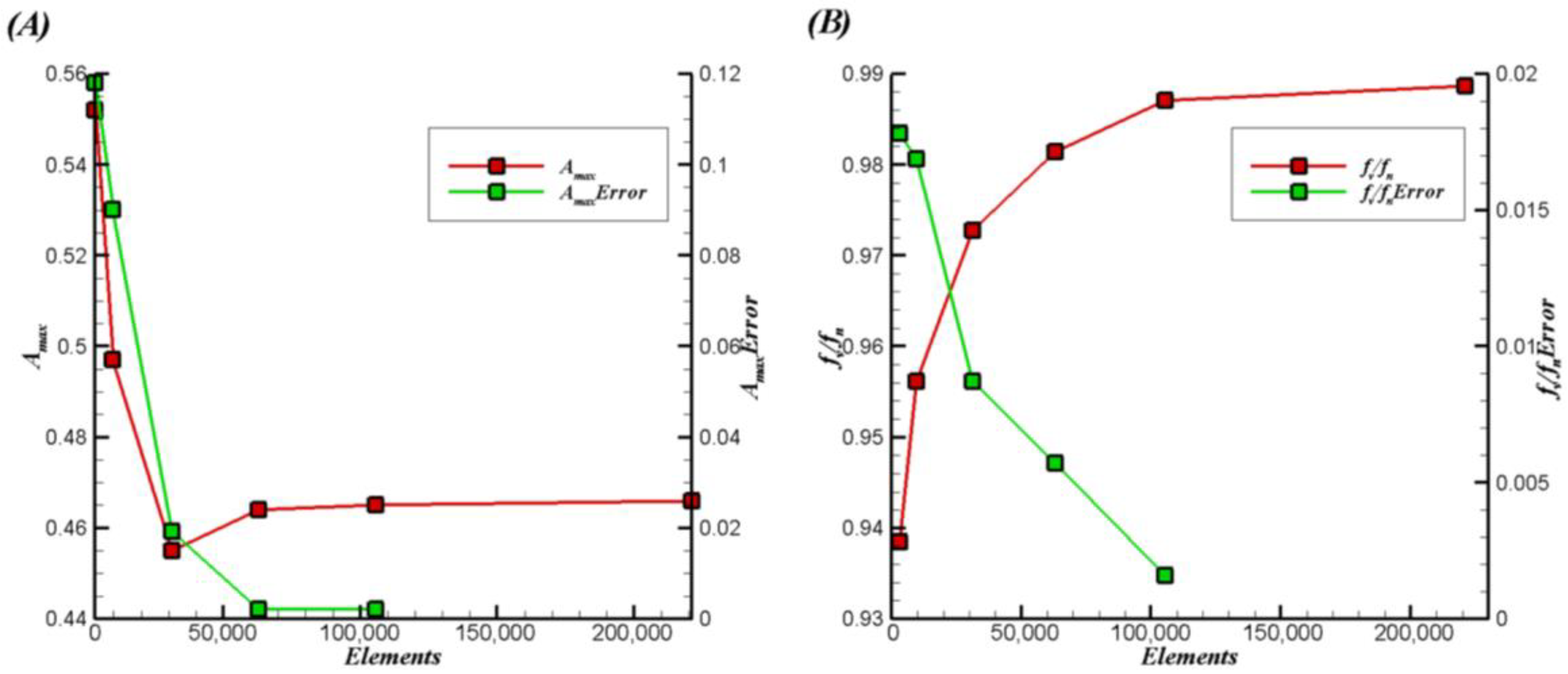
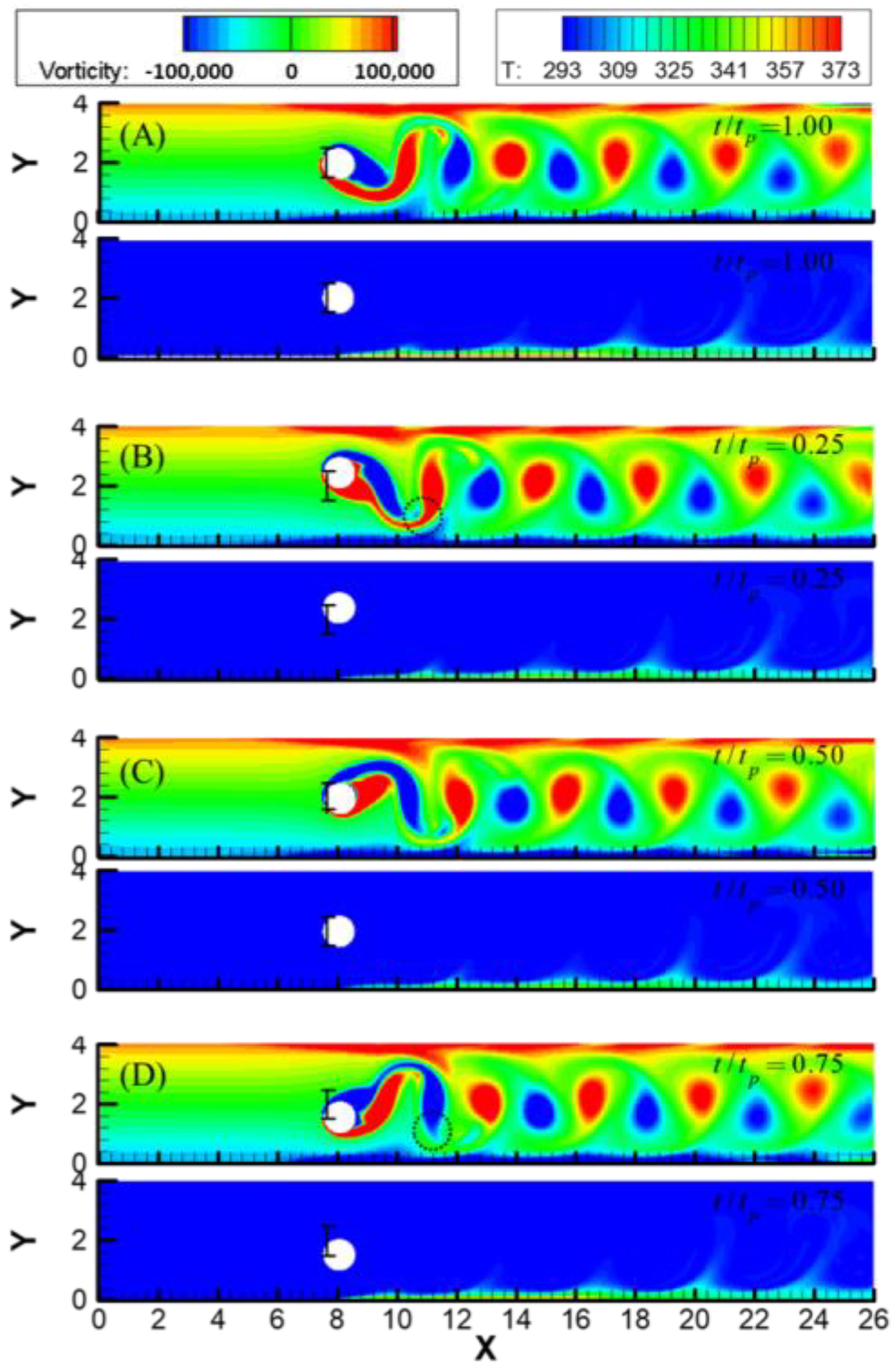
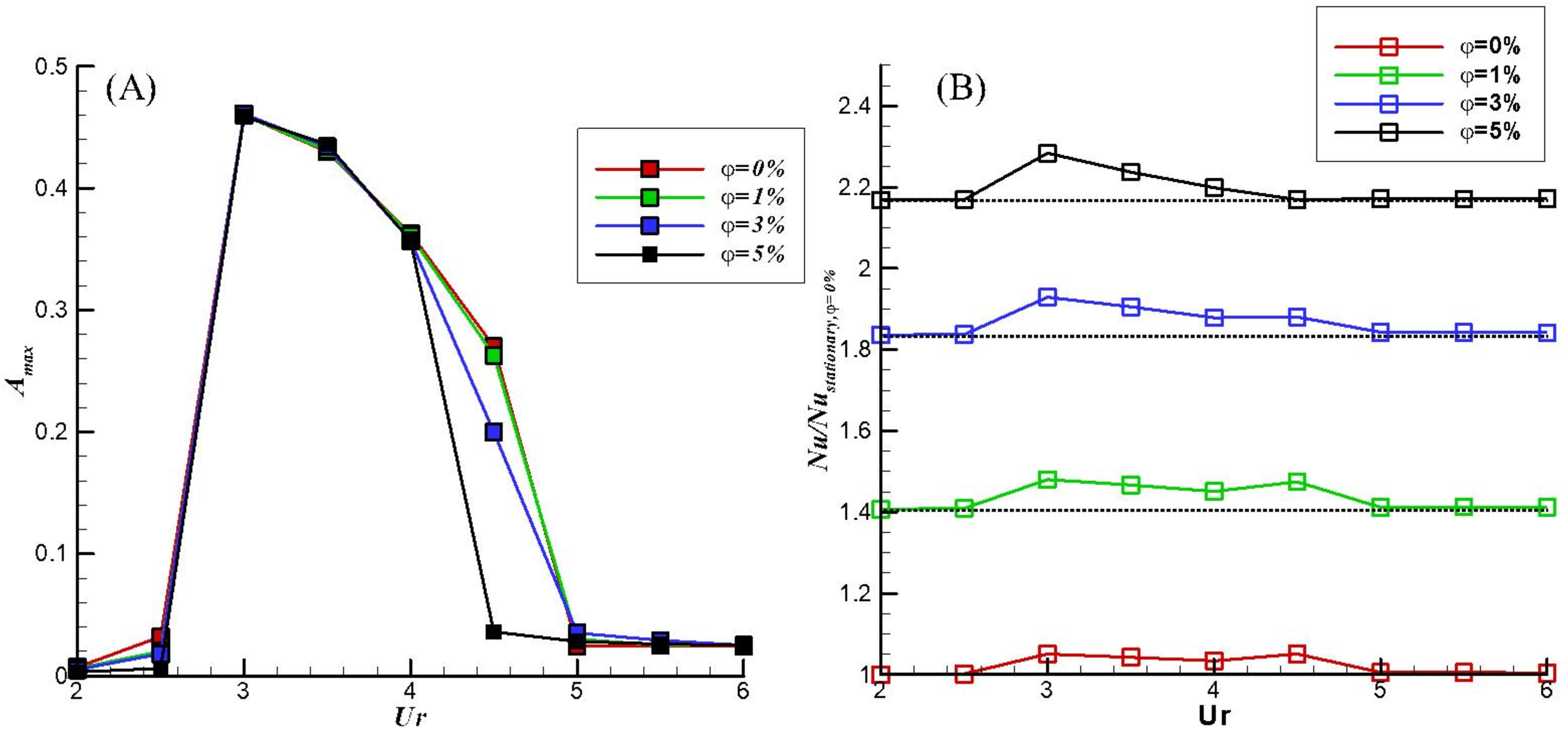
Disclaimer/Publisher’s Note: The statements, opinions and data contained in all publications are solely those of the individual author(s) and contributor(s) and not of MDPI and/or the editor(s). MDPI and/or the editor(s) disclaim responsibility for any injury to people or property resulting from any ideas, methods, instructions or products referred to in the content. |
© 2023 by the authors. Licensee MDPI, Basel, Switzerland. This article is an open access article distributed under the terms and conditions of the Creative Commons Attribution (CC BY) license (https://creativecommons.org/licenses/by/4.0/).
Share and Cite
Lee, Y.-B.; Liao, C.-C. Numerical Simulations on Heat Transfer Enhancement of Nanofluids in Microchannel Using Vortex Generator. Eng. Proc. 2023, 38, 68. https://doi.org/10.3390/engproc2023038068
Lee Y-B, Liao C-C. Numerical Simulations on Heat Transfer Enhancement of Nanofluids in Microchannel Using Vortex Generator. Engineering Proceedings. 2023; 38(1):68. https://doi.org/10.3390/engproc2023038068
Chicago/Turabian StyleLee, Yong-Bin, and Chuan-Chieh Liao. 2023. "Numerical Simulations on Heat Transfer Enhancement of Nanofluids in Microchannel Using Vortex Generator" Engineering Proceedings 38, no. 1: 68. https://doi.org/10.3390/engproc2023038068
APA StyleLee, Y.-B., & Liao, C.-C. (2023). Numerical Simulations on Heat Transfer Enhancement of Nanofluids in Microchannel Using Vortex Generator. Engineering Proceedings, 38(1), 68. https://doi.org/10.3390/engproc2023038068




